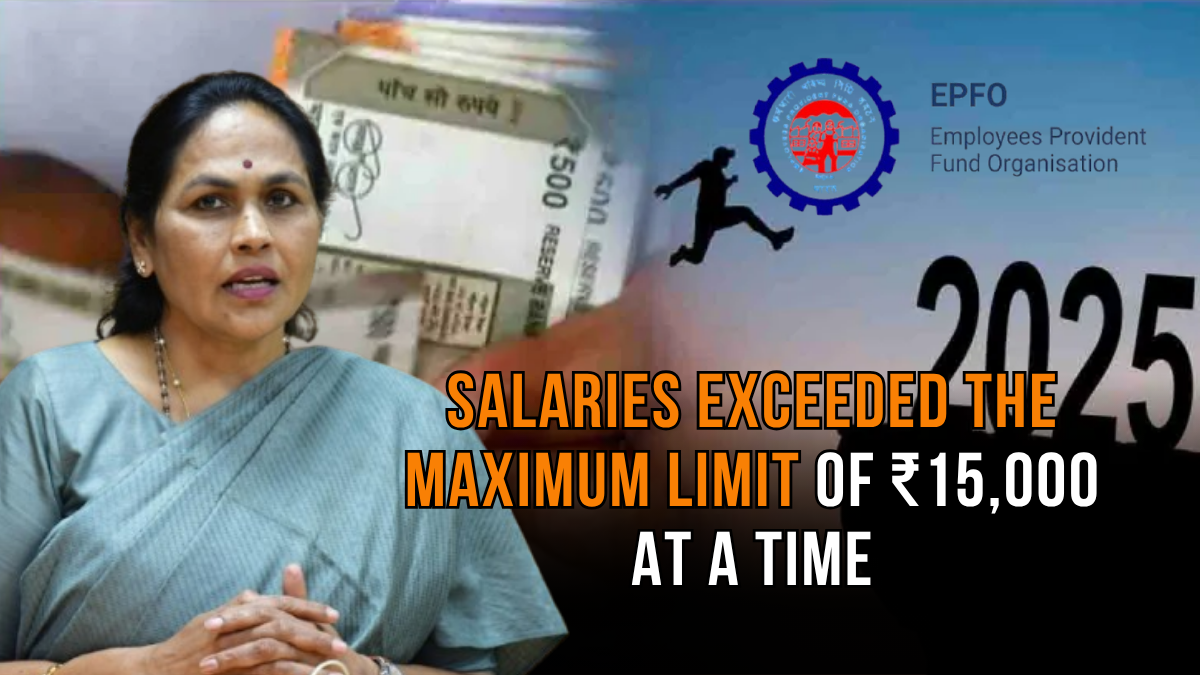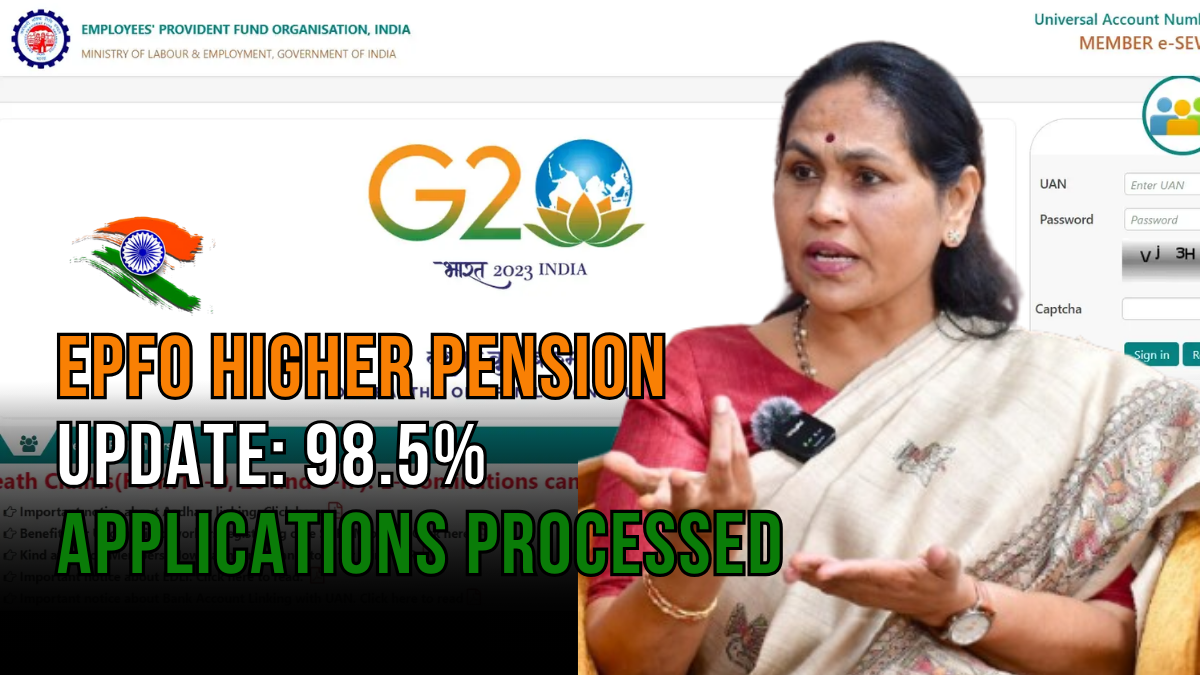The Employees’ Provident Fund Organisation (EPFO) has made significant progress on a crucial issue affecting millions of Indian workers. After years of uncertainty, the government has finally provided clarity on the status of pension applications based on higher wages.
Minister of State for Labour and Employment Shobha Karandlaje recently informed Parliament that EPFO has processed 98.5% of all applications for pension on higher wages (PoHW). This development brings relief to countless employees who have been waiting for updates on their retirement benefits.

The numbers tell a compelling story of bureaucratic efficiency mixed with concerning rejection rates. Understanding what this means for your financial future requires examining the complete picture of this long-standing controversy.
Background: The Higher Pension Controversy
The dispute over higher pension eligibility has roots going back over a decade. In 2014, EPFO issued a circular stating that pensions based on actual salaries were only available to employees who had opted for this during their service period and whose salaries exceeded the maximum limit of ₹15,000 at that time.
This created confusion and frustration among employees who believed they deserved pension benefits calculated on their full salary rather than the capped amount. Many workers felt shortchanged, especially those with higher incomes who contributed more to the fund.
The matter eventually reached the Supreme Court, leading to a landmark judgment on November 4, 2022. The court ruled that all employees who were EPF members before September 1, 2014, and were still working or had retired after that date, were eligible to opt for higher pension based on their actual salary. However, there was a catch – they needed to exercise this option jointly with their employer.
Current Status: The Numbers Revealed
According to the latest government data as of July 16, 2025, here’s how the 15.24 lakh applications have been processed:
Approved Applications: 4,00,573 demand letters were issued to eligible applicants, representing successful cases where higher pension benefits were approved.
Rejected Applications: 11,01,582 applications were rejected, accounting for the majority of submissions. This high rejection rate has raised concerns among applicants and their representatives.
Pending Applications: Only 21,995 applications remain pending, representing just 1.5% of the total submissions.
The rejection rate varies significantly across regions. Chennai and Puducherry region shows particularly high rejection numbers, with 63,026 out of 72,040 applications being denied – a rejection rate of nearly 87%.
Why Applications Get Rejected
While the government hasn’t provided detailed explanations for the high rejection rates, several factors likely contribute to application denials:
Documentation Issues: Missing or incomplete paperwork, including joint applications from both employee and employer, often leads to rejection.
Eligibility Criteria: Applicants who weren’t EPF members before September 1, 2014, or who don’t meet other specific requirements outlined in the Supreme Court judgment.
Employer Non-Cooperation: Since the scheme requires joint opt-in from both employee and employer, lack of employer participation can result in rejection.
Timeline Violations: Applications submitted outside the specified deadlines or without proper adherence to procedural requirements.
What This Means for Your Retirement Planning
The processing of these applications has significant implications for retirement planning across India. For those whose applications were approved, the higher pension amount can substantially improve their post-retirement financial security.
The Employees’ Pension Scheme amendment of August 22, 2014, had raised the pensionable salary cap to ₹15,000 per month from ₹6,500 per month. It also allowed members, along with their employers, to contribute 8.33% on their actual salaries if they exceeded the cap toward the EPS.
This means eligible employees can now receive pension benefits calculated on their full salary rather than the previous capped amount, potentially increasing their monthly pension by thousands of rupees.
Steps for Affected Employees
If your application was rejected and you believe you meet the eligibility criteria, consider these options:
Review Rejection Reasons: Contact EPFO to understand the specific reasons for rejection. This information can help you determine if there’s a valid basis for appeal.
Gather Documentation: Ensure you have all required documents, including employment records, salary certificates, and any communication with your former employers about the pension scheme.
Seek Legal Advice: Given the complexity of the regulations and the Supreme Court judgment, consulting with a legal expert specializing in labor law might be beneficial.
Follow Up on Pending Applications: If your application is among the 21,995 still pending, maintain regular contact with EPFO for status updates.
Looking Ahead: What’s Next?
The government hasn’t provided a specific timeline for resolving the remaining pending applications, but with only 1.5% of cases outstanding, resolution appears likely in the near future. The EPFO continues to process these applications in accordance with the Supreme Court’s directions.

For future applicants, this experience highlights the importance of maintaining proper documentation and ensuring employer cooperation when dealing with EPFO matters. The high rejection rate also underscores the need for clearer guidelines and better communication between EPFO and applicants.
Frequently Asked Questions
Q. Who is eligible for pension on higher wages?
A. Employees who were EPF members before September 1, 2014, and either continued working or retired after that date can apply, provided they exercise the option jointly with their employer.
Q. What happens if my employer doesn’t cooperate?
A. Unfortunately, the scheme requires joint participation. Without employer cooperation, applications typically get rejected. Legal consultation might help in such cases.
Q. Can I reapply if my application was rejected?
A. This depends on the specific reason for rejection. If it was due to documentation issues that can be corrected, reapplication might be possible.
Q. How much higher will my pension be?
A. The increase depends on your actual salary versus the capped amount. Those with significantly higher salaries will see more substantial increases in their pension benefits.
Secure Your Retirement Future
The EPFO’s progress in processing higher pension applications represents a significant step toward resolving a long-standing issue affecting millions of Indian workers. While the high rejection rate is concerning, the 98.5% processing rate demonstrates the organization’s commitment to addressing this backlog.
For those still navigating this process, patience and persistence remain key. Keep your documentation organized, stay informed about any policy updates, and don’t hesitate to seek professional guidance when needed. Your retirement security may depend on understanding and properly navigating these complex regulations.
Whether your application was approved, rejected, or still pending, this development marks an important milestone in India’s evolving retirement benefits landscape. Stay engaged with the process and ensure you’re taking all necessary steps to secure the retirement benefits you’ve earned through years of contribution to the EPF system.
For More Information Click HERE